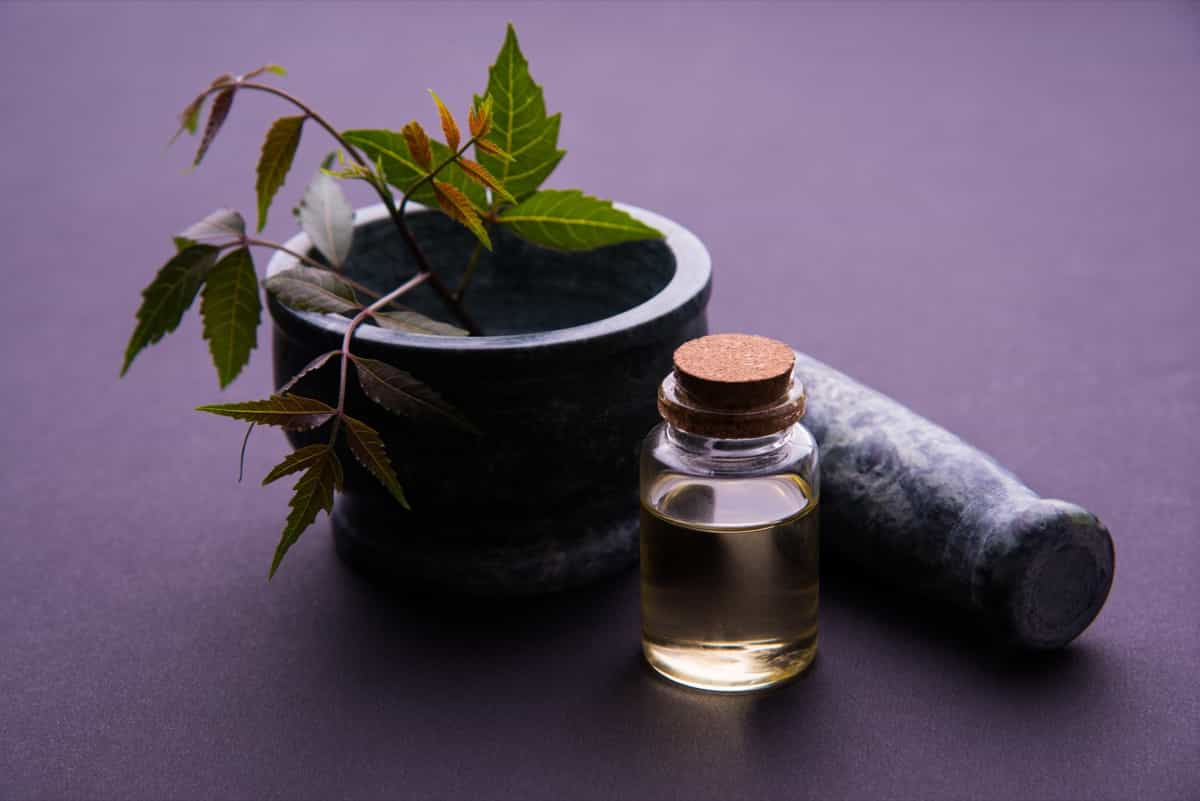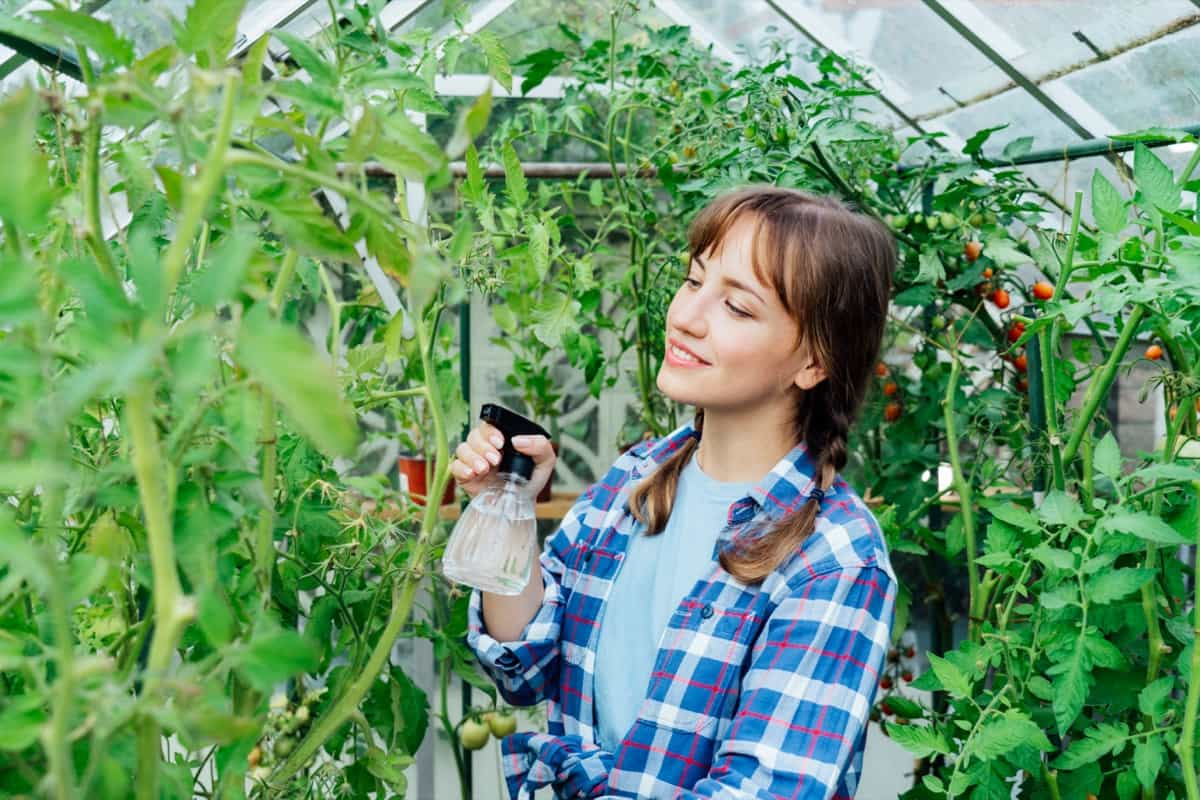Neem oil is a powerful organic pest control method that protects your greenhouse crops effectively. It is widely recognized for its ability to combat various pests without harming beneficial insects or leaving harmful residue on plants. Using neem oil in greenhouse gardening promotes plant health by increasing resistance against pests and diseases. This means fewer chemical interventions are required throughout the growing season.

How to Use Neem Oil in Greenhouse Gardening
Benefits
The advantage of using neem oil is its organic nature. Unlike chemical pesticides, neem oil is derived from the neem tree seeds and contains no harmful chemicals or toxins that could harm your crops or the environment. This makes it an ideal choice for those practicing organic gardening methods. The main reason neem oil benefits greenhouse gardening is its versatility. It acts as an organic pest control method and helps prevent and treat fungal infections like powdery mildew.
In addition to being safe for your plants, neem oil also boasts insecticidal properties that make it effective against a wide range of common greenhouse pests. Following proper instructions is important when applying neem oil in your greenhouse garden. Dilute the concentrated form with water per package directions before spraying it onto your plants. Be sure to cover both sides of the leaves thoroughly for maximum effectiveness.
How to Apply
Applying neem oil in greenhouse gardening is a simple and effective way to protect crops from pests and diseases. First, dilute the neem oil according to the instructions on the bottle. Typically, you’ll mix one or two tablespoons of neem oil with a gallon of water. Be sure to use warm water as it helps emulsify the oil.
In case you missed it: How to Use Neem Oil in Composting: Benefits, Tips, and Techniques for Success

Next, pour the diluted solution into a spray bottle or sprayer. Ensure all plant parts are covered, including both sides of leaves and stems. Applying neem oil in the morning or late evening when temperatures are cooler is best. This allows for better plant absorption without causing any damage due to heat stress.
When spraying, focus on areas where pests commonly reside, such as the undersides of leaves and around flower buds. Pay extra attention to new growth as it tends to be more susceptible to infestations. Remember that persistence is key when using neem oil as organic pest control. Repeat applications every 7-14 days or after rainfall until pests are under control.
Neem Oil As an Organic Pest Control
When used as an organic pest control method in greenhouses, neem oil is a natural deterrent against many common pests. Its strong aroma and taste repel insects such as aphids, whiteflies, spider mites, and thrips. By applying neem oil regularly to your greenhouse plants, you can create an environment that discourages these pests from infesting your crops. To apply neem oil in your greenhouse gardening routine, dilute it according to the instructions on the product label. Use a sprayer to evenly distribute the diluted solution onto both sides of plant leaves, covering all surfaces where pests are likely to hide.
Controlling Fungal Diseases
This natural oil has powerful antifungal properties that can effectively control fungal infections in your greenhouse crops. When it comes to using neem oil for fungal diseases, prevention is key. Regularly applying a diluted solution of neem oil to your plants can create a protective barrier against fungi, preventing them from taking hold and spreading. Make sure to cover both sides of the leaves thoroughly for maximum effectiveness.
If you notice fungal infection signs in your greenhouse plants, neem oil can also be a treatment option. Mix neem oil with water in addition to its insecticidal proper instructions on the product label and spray it onto affected areas. The antifungal properties of neem oil will help eliminate the fungus and prevent further spread.
Natural Insecticide
Neem oil has gained popularity as a natural insecticide for greenhouse pests, and a good reason. The active compounds in neem oil disrupt the feeding and reproductive cycles of many common pests like aphids, whiteflies, and thrips. By inhibiting their growth and development, neem oil effectively reduces pest populations. Dilute it with water according to the instructions on the product label and spray it onto affected plants or surrounding areas.
In case you missed it: How to Use Neem Oil in Hydroponic Gardening: Organic Pest Control in Hydroponic Farming

Cover both sides of the leaves thoroughly to ensure maximum effectiveness against pests. It’s important to note that neem oil works best as a preventive measure or at early stages of infestation. Neem oil acts as a repellent against certain pests like mites. Its strong scent deters these tiny arachnids from settling on your plants and causing damage.
Preventing and Treating Powdery Mildew
Powdery mildew can wreak havoc on greenhouse crops, forming a white powdery coating on plants’ leaves, stems, and fruits. Not only does it look unsightly, but it also weakens the plant and hampers its ability to photosynthesize properly. This remedy has been proven effective in preventing and treating powdery mildew in greenhouses.
Neem oil contains compounds that disrupt fungi’s growth and reproduction, helping control this pesky disease. Mix about 2 tablespoons of neem oil with 1 gallon of water to use neem oil for powdery mildew prevention and treatment. Spray this solution onto your greenhouse plants every two weeks or as needed. Make sure to coat all parts of the plant thoroughly for maximum effectiveness.
Managing Aphids and Whiteflies
Aphids and whiteflies can wreak havoc on greenhouse crops, causing stunted growth, yellowing leaves, and even death. To apply neem oil for managing aphids and whiteflies in greenhouse crops, mix it with water according to the manufacturer’s instructions. Use a spray bottle or sprayer to coat both sides of the plant leaves evenly. Treating the affected plants and nearby ones is important, as these pests can easily spread.
Controlling Spider Mites
Spider mites, those tiny pests that can wreak havoc on your greenhouse plants, are a common problem many gardeners face. This natural solution is highly effective in controlling spider mite infestations without harming beneficial insects or leaving harmful residues behind. When using neem oil for spider mite control, it’s crucial to ensure thorough coverage of plant surfaces. Dilute the neem oil according to package instructions and spray it evenly on both sides of the leaves. The oil suffocates spider mites while disrupting their feeding habits and reproductive cycle.
Combat Thrips Infestation
Thrips, those tiny pests that can wreak havoc on your greenhouse crops, are no match for the power of neem oil. These pesky insects feed on plant sap and cause damage by stunting growth and transmitting diseases. Luckily, neem oil is an effective tool for controlling thrips infestations.
Mix 1-2 teaspoons of pure neem oil with a gallon of water in a spray bottle or sprayer. Shake well to ensure proper dilution. Thoroughly apply the diluted neem oil solution to all parts of the affected plants, including leaves, stems, and flowers. Cover upper and lower leaf surfaces where thrips tend to hide. For best results, repeat the application every 7-10 days until you no longer see signs of thrip activity.
In case you missed it: Using Neem Oil for Seed Treatment: Benefits and Preparation Steps

Conclusion
Using neem oil in your greenhouse garden is relatively easy. Dilute the concentrated neem oil according to the instructions on the packaging and apply it directly onto your plants using a sprayer or sponge applicator. Make sure to cover both sides of the leaves thoroughly for maximum effectiveness. Furthermore, neem oil also possesses antifungal properties that help combat common fungal diseases like powdery mildew. Applying neem oil to your greenhouse plants can prevent these diseases from taking hold and damaging your crops.
- Feed Your Flock for Less: Top 10 Tips to Save on Chicken Feed
- Ultimate Guide to Ossabaw Island Hog: Breeding, Raising, Diet, and Care
- Hatching Answers: The Top 10 Reasons Your Chickens Aren’t Laying Eggs
- Eggs and Economics: Breaking Down the Cost of Raising Backyard Chickens
- Defend Your Greens: Proven Methods to Keep Iguanas Out of Your Garden
- Ultimate Guide to Cinnamon Queen Chicken: A Comprehensive Guide for Beginners
- Ultimate Guide to California Tan Chicken: Breeding, Raising, Diet, Egg-Production and Care
- Ultimate Guide to Marsh Daisy Chicken: Breeding, Raising, Diet, and Care
- 10 Types of Chicken Farming Businesses You Can Start for Profits